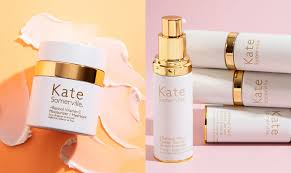
How to Use Niacinamide and Retinol Together for Radiant Skin
In today’s world of advanced skincare, combining powerhouse ingredients can unlock exceptional skin benefits, especially when done thoughtfully and in the correct sequence.
Niacinamide and retinol are two such ingredients that work wonders independently, but when used together, they deliver transformative results without overwhelming the skin.
Whether your skincare routine is a complex, 10-step ritual or a basic cleanse-and-moisturize approach, incorporating both niacinamide and retinol can elevate your skin’s health and appearance.
It’s true that we’re spoiled for choice with effective skincare formulas, but this abundance can lead to confusion about ingredient pairings and potential conflicts.
That’s why understanding how to use niacinamide and retinol together is essential to get the most out of your skincare without compromising your skin barrier.
Let’s begin by refreshing our knowledge of each ingredient and the roles they play in supporting healthy, glowing skin.
Niacinamide, also known as vitamin B3, is a multi-functional humectant that draws water into the outer skin layer and locks it in to maintain long-lasting hydration.
It helps restore moisture levels, supports the skin barrier, and offers anti-inflammatory benefits that soothe irritation, calm redness, and improve overall skin tone.
Additionally, niacinamide aids in regulating sebum production, making it a useful ingredient for all skin types, especially those prone to acne and oiliness.
Regular use of niacinamide helps minimize pore appearance, reduce breakouts, and reinforce skin resilience without triggering irritation.
Retinol, on the other hand, is a powerful derivative of vitamin A that accelerates cell turnover, stimulating collagen and revealing smoother, younger-looking skin.
It targets visible signs of aging, including fine lines, wrinkles, and uneven pigmentation, leaving your skin firmer, brighter, and visibly refreshed.
Because retinol is so potent, it must be introduced slowly into your routine to avoid common side effects like dryness, flaking, and irritation.
Retinol is best used in the evening, as it makes the skin more sensitive to UV rays, so daily SPF protection becomes even more crucial during use.
Now, can you use niacinamide and retinol together? The answer is yes—with proper layering and usage, they can be a powerful duo for healthier skin.
Niacinamide can calm and hydrate the skin, buffering the potential dryness and irritation that often accompany the use of retinol, especially for beginners.
Together, niacinamide and retinol create a synergy: retinol works to renew skin cells, while niacinamide ensures the skin barrier stays strong and balanced.
Start by applying niacinamide first, ideally in the form of a serum, allowing it to absorb for a few minutes before layering on your retinol treatment.
This layering method helps prep the skin, reducing the likelihood of irritation while allowing both ingredients to work effectively without interference.
One common skincare concern is figuring out which ingredients shouldn’t be mixed with niacinamide—and vitamin C is often debated in this context.
Some experts caution that combining vitamin C and niacinamide may cause them to neutralize each other’s benefits, especially if not formulated to work together.
However, many modern formulations address these compatibility issues, so you can find products that combine them effectively if you prefer streamlined routines.
Still, if you’re unsure, use vitamin C in the morning and reserve niacinamide for nighttime or as part of a separate routine to be on the safe side.
So, how often should you use niacinamide? The good news is that it’s gentle enough for daily use—twice a day, in fact, for maximum hydration and skin support.
You’ll find niacinamide in serums, moisturizers, toners, and masks, making it an easy addition to any routine without the risk of excessive irritation.
Daily application ensures your skin stays hydrated, your barrier remains intact, and other ingredients can penetrate more effectively into deeper skin layers.
If you’re combining niacinamide with hyaluronic acid and retinol, there’s even more reason to be excited about your skincare lineup.
This trio works harmoniously to balance moisture, soothe the skin, and drive visible results like plumper texture and reduced signs of aging.
Niacinamide helps with oil control and inflammation, hyaluronic acid boosts hydration levels, and retinol delivers the rejuvenating effects of cellular renewal.
When layering all three, start with a hyaluronic acid serum on clean skin, wait about 5–10 minutes, then apply niacinamide serum followed by retinol treatment.
This gradual application allows each ingredient to absorb and activate fully, ensuring optimal results with minimal risk of irritation or dryness.
Always remember to patch test new products and monitor how your skin responds, especially when introducing potent actives like retinol for the first time.
Skincare is highly personal, so listening to your skin and adjusting usage frequency is key to long-term success and barrier protection.
Now, what about combining niacinamide with exfoliating acids like AHAs and BHAs? This combination can also be beneficial if introduced carefully.
AHAs (like glycolic acid) and BHAs (like salicylic acid) exfoliate the skin, clearing away dead cells but can sometimes lead to dryness or sensitivity.
Niacinamide plays a restorative role in this case, rehydrating the skin, calming inflammation, and maintaining the balance between exfoliation and moisture.
When using niacinamide after chemical exfoliants, it helps replenish the moisture barrier and prevents your skin from becoming stripped or reactive.
Overusing acids can cause your skin to overproduce oil in response to dryness, but niacinamide helps prevent this by restoring hydration and calm.
Timing matters—use exfoliating acids a few times a week, ideally at night, and follow with a niacinamide-rich serum to lock in comfort and balance.
When building a routine with niacinamide, choose serums for targeted delivery since they penetrate deeply into the skin and stay on longer than cleansers.
Apply niacinamide after cleansing and toning but before heavier creams or oils, giving it the best chance to absorb and get to work below the surface.
Niacinamide serums are often formulated to be lightweight and fast-absorbing, making them easy to incorporate into both morning and evening routines.
The key to success when using niacinamide and retinol is consistency, patience, and building up tolerance gradually for best long-term results.
As your skin adapts, you’ll notice reduced redness, fewer breakouts, improved texture, and a brighter, more even complexion that looks and feels healthier.
To wrap things up, combining niacinamide and retinol is not only safe but encouraged, as long as you follow best practices for layering and frequency.
This duo is ideal for addressing multiple skin concerns at once, from premature aging to dehydration, uneven tone, and oil control, making it a versatile pairing.
If skin transformation is your goal, make these two ingredients a cornerstone of your skincare plan—and don’t forget your SPF every single morning.
Want more skincare tips and routines? Follow us on Instagram and tune in to The Green Sofa podcast for expert insights, product reviews, and beauty talk.
With the right routine, consistent habits, and informed ingredient choices, achieving your skin goals is absolutely within reach—and your skin will thank you.


